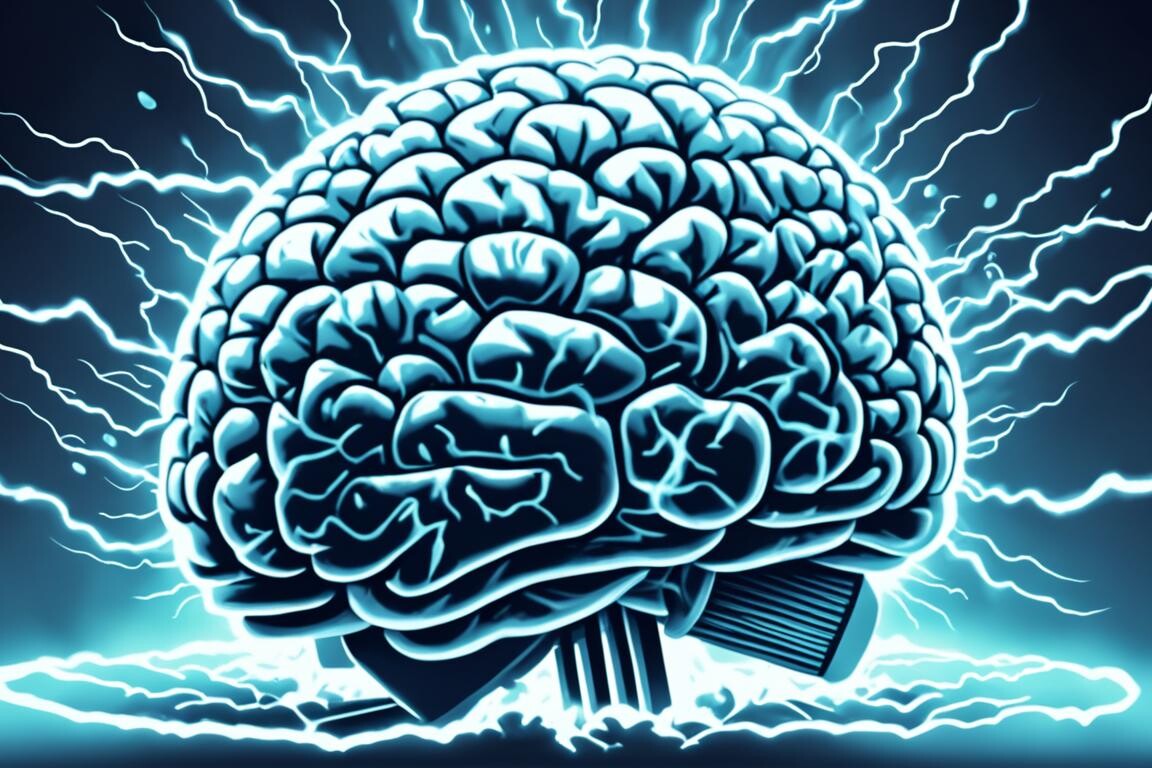Epilepsy is a disorder that causes seizures. Seizures are bursts of electrical activity in the brain. They make the brain work differently for a short time. These seizures can show in different ways, like jerking movements or losing awareness. Knowing the types of epilepsy symptoms helps in diagnosing and managing the condition.
It’s a common disorder in the U.S., affecting about 3 million people. It can start at any age but is more common in kids or older adults. Causes include genes, brain injuries, or infections. In many cases, the cause remains a mystery. Learning about the symptoms and seizures linked with epilepsy is key to spotting and dealing with it.
If you or someone you know has epilepsy, or you’re eager to learn more, this article is your guide. It will cover the main information on spotting and handling epilepsy symptoms.
Table of Contents
ToggleUnderstanding Epilepsy and Its Prevalence
Epilepsy is a long-term condition with recurrent seizures. Seizures are sudden bursts of uncontrolled electrical activity in the brain. These can cause the person to lose consciousness, have muscle spasms, or notice changes in how they see or feel. It’s triggered by unusual brain activity, which might come from genetics, brain injuries, infections, or other health issues.
What is Epilepsy?
Epilepsy affects the brain’s electrical system, leading to seizures. Seizures vary from small moments of lost attention or muscle twitches to large, long-lasting movements. While it usually lasts a lifetime, most people with epilepsy can live fully if they get the right treatments.
How Common is Epilepsy?
Epilepsy is among the most widespread neurological problems worldwide, impacting 50 million people. The majority, about 80%, are in places with less wealth. If diagnosed and treated well, up to 70% could be seizure-free. Yet, many people, especially in low-income areas, lack the needed care.
4 to 10 out of 1,000 people might have epilepsy at any time. Each year, 5 million new cases are identified globally. In areas with less wealth, the average number of new cases is 139 for every 100,000 people. In wealthier places, this number drops to 49 per 100,000.
Epilepsy symptoms: Types and Manifestations
Epilepsy is a complex neurological condition. It appears in various kinds of seizures, each showing different symptoms. It is important to know these types for proper epilepsy treatment.
Focal Seizures (Simple and Complex)
Focal seizures start in a specific part of the brain. There are simple focal seizures and complex focal seizures. The simple ones cause small changes in how you feel or think. The complex ones can make you unaware and act strangely.
Generalized Seizures (Tonic-Clonic, Absence, Myoclonic, Clonic, Tonic, Atonic)
Generalized seizures affect both brain sides at the same time. They include tonic-clonic, absence, myoclonic, clonic, tonic, and atonic seizures. They can make you unconscious, jerk, and change how you move or stand.
Status Epilepticus
Status epilepticus is a very serious condition. It’s when seizures happen one after the other without a break. This needs immediate medical care because it can lead to severe problems.
Recognizing Seizure Triggers and Risk Factors
Epilepsy can lead to seizures at times you might not expect. But, there are known seizure triggers. These triggers can spike the chance of a seizure happening. It’s key to know and watch these triggers to live better with epilepsy. This helps lower how often seizures come.
Common Seizure Triggers
Many things can act as epilepsy triggers and start a seizure. Common ones are missing anti-seizure meds, not sleeping enough, being super stressed, having hormone changes (like during your period), and seeing flashing lights or patterns. Some foods and drinks can also trigger seizures. By keeping a record of when seizures happen, you and your doctor can spot personal seizure triggers. This makes avoiding them easier.
Risk Factors for Developing Epilepsy
The actual causes of epilepsy might not always be clear. But, there are things that can put you at a higher risk of having it. These include past head injuries, stroke, brain tumors, family history, prenatal problems, and brain-affecting diseases. Knowing these risk factors for epilepsy lets you make choices that could lower your risk of getting it.
| Common Seizure Triggers | Potential Risk Factors for Epilepsy |
|---|---|
|
|
Diagnosis and Treatment Options
Diagnosis of epilepsy starts with a medical exam. Doctors look at your brain activities and health history. They use a test called an electroencephalogram (EEG) to check your brain waves. An MRI gives a detailed look at your brain structure for any issues.
Diagnostic Tests for Epilepsy
More tests include fMRI to find brain functions, PET scans for low metabolism areas, and SPECT to see blood flow during seizures. Neuropsychological testing checks on memory and thinking. Some tests show which part of the brain acts up during seizures.
Medication Therapy
The main way to treat epilepsy is with anti-seizure drugs. These meds help lower the number and strength of seizures. The drug you get depends on your type of epilepsy and other personal info. Sometimes, even with meds, seizures may not fully stop.
Dietary Interventions (Ketogenic Diet)
Some people find help in a special diet, like the ketogenic one. It’s high in fat and low in carbs. This diet might make fewer seizures, especially in young people with epilepsy. It changes how your body works and can make your brain more stable.
Surgical and Device-Based Treatments
If medicines don’t help, surgery or devices could be options. Surgery to take out the area causing the seizures can work for some. Or, devices that send tiny shocks to the brain can also control seizures. These choices are for when other treatments don’t fully do the job.

Conclusion
Epilepsy is a complex disorder that affects many people around the globe. It includes over 70 million people worldwide. In the United States, about 3 million adults and 470,000 children have it. It is important to know about the different types of seizures, what might cause them, and the diagnosis and treatments available.
Epilepsy can start in infants younger than 1 year or in adults older than 50 years. Causes can include head injuries, brain issues, and family traits. Medicine and alternative treatments have made progress. But, not everyone with epilepsy can stop getting seizures completely. Only about half can, without bad side effects.
If you have epilepsy, it’s important to work with your healthcare team closely. This team might have neurologists, pharmacists, and other special doctors. They will help you make a plan that fits you. By being active in your care, you can improve how you deal with epilepsy. This can also make your life better.
FAQ
What is epilepsy?
Epilepsy is a brain condition that causes recurrent seizures. These seizures are bursts of electric activity in the brain. They can make someone jerk uncontrollably, lose consciousness, or affect how they feel.
How common is epilepsy?
Around 3 million people in the U.S. have epilepsy. It can start at any age. Yet, children and older adults are at higher risk.
What causes epilepsy?
Many things can cause epilepsy. This includes brain injuries, infections, and genetic factors. However, sometimes the exact cause is not known.
What are the different types of seizures associated with epilepsy?
Epilepsy can show through different seizure types like focal or generalized seizures. Each type has different symptoms and effects on the body.
What are common seizure triggers for people with epilepsy?
Seizures can happen for many reasons. Some common triggers are stress, a lack of sleep, hormonal changes, and certain medications.
How is epilepsy diagnosed?
To diagnose epilepsy, doctors do a full medical check-up. They look at the patient’s brain activity, test their blood, and review their medical history.
What are the treatment options for epilepsy?
The treatment for epilepsy includes taking medicines or changing the diet to a special plan. Sometimes, surgery or special devices are needed. The right treatment depends on each person’s condition.
Source Links
- https://www.mayoclinic.org/diseases-conditions/epilepsy/symptoms-causes/syc-20350093
- https://www.nationwidechildrens.org/conditions/epilepsy
- https://www.nhs.uk/conditions/epilepsy/symptoms/
- https://www.ninds.nih.gov/health-information/disorders/epilepsy-and-seizures
- https://www.who.int/news-room/fact-sheets/detail/epilepsy
- https://www.epilepsy.com/what-is-epilepsy/seizure-types
- https://www.mayoclinic.org/diseases-conditions/epilepsy/diagnosis-treatment/drc-20350098
- https://my.clevelandclinic.org/health/diseases/17636-epilepsy
- https://www.uspharmacist.com/article/an-overview-of-epilepsy
About The Author

This article is medically reviewed by Dr. Chandril Chugh, Board-Certified Neurologist, providing expert insights and reliable health information.
Dr. Chandril Chugh is a U.S.-trained neurologist with over a decade of experience. Known for his compassionate care, he specializes in treating neurological conditions such as migraines, epilepsy, and Parkinson’s disease. Dr. Chugh is highly regarded for his patient-centered approach and dedication to providing personalized care.
→ Book a consultation to discover which remedies suit your needs best.






